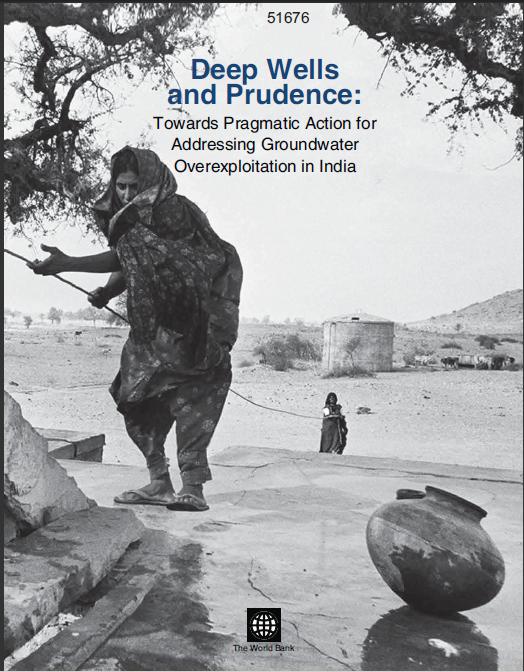South Bihar Plains
Provision of safe drinking water in rural Bihar: Paper in the Journal of Water, Sanitation and Hygiene for Development
Posted on 10 Feb, 2013 11:21 AMA practical paper that addresses vital gaps in water quality monitoring and institutional weakness, focuses on the role of access and interventions in severely contaminated areas and calls for a drastic shift in the monitoring and intervention strategy to address safe water provision for rural Bihar
Qualitative and quantitative water scarcity issues in Bihar - A presentation
Posted on 21 Nov, 2011 11:49 AMThis presentation highlights the grave water situation in Bihar in the context of the emerging water quality and quantity issues that the world and especially developing countries will be facing in the near future.
Introducing a new farming technique (SRI) in the Gangetic plains,Bihar
Posted on 28 Jul, 2011 03:19 PMArticle and Image courtesy: BodhiCommons
Deep wells and prudence - Towards pragmatic action for addressing groundwater overexploitation in India - A World Bank document (2010)
Posted on 12 Apr, 2011 01:51 AM India is the largest user of groundwater resources in the world. It is estimated that approximately 230 cubic kilometers per year is used annually, this is more than a quarter of the total world consumption from this resource.
India is the largest user of groundwater resources in the world. It is estimated that approximately 230 cubic kilometers per year is used annually, this is more than a quarter of the total world consumption from this resource.
It is in this context that this World Bank report looks at the reasons for this quantum of groundwater usage.
The report delves into socio-economic and political reasons and looks at policies which inadvertently promote so much extraction. The report also analyses various attempts to manage this resource. These attempts range from government and international agency efforts directed to grassroots mobilisations. Finally the report comes out with suggestions to deal with this crisis.
Assessing and improving water productivity in conservation agriculture systems in the Indus-Gangetic basin – A working paper by Challenge Program on Water and Food
Posted on 22 Aug, 2010 02:38 PMThe paper by Challenge Programme on Water and Food (CPWF) attempts to assess and improve water productivity in conservation agriculture systems in the Indus-Gangetic basin, in which during the past 40 years an intricate mosaic of interactions between man & nature, poverty & prosperity and problems & possibilities has emerged. Rapid expansion in agricultural water use is a common theme across these interactions and access to water is central to the livelihoods of the rural poor.
Indo-Gangetic river basins: Summary situation analysis by Challenge Program on Water and Food
Posted on 16 Aug, 2010 07:37 PMThe paper by the Challenge Programme on Water and Food (CPWF) - Basin Focal Project provides a brief situation analysis related to water, agriculture & poverty, water resources, water productivity, institutional aspects and opportunities & risks related to the development of the Indo-Gangetic basin (IGB). Management of IGB water resources presents some formidable challenges and, therefore, steps must be taken towards integrated management of the IGB’s water and land resources in order to ensure the future sustainability of all production and ecosystems in the basin.
Development of regional flood frequency relationships using L-moments for South Bihar – A research report by the National Institute of Hydrology
Posted on 14 Jul, 2010 10:55 PMIn this study, regional flood frequency relationships have been developed using L-moments for South Bihar, in the alluvial plains of Indo-Gangetic basin and Kaimur-Chhotanagpur Santhal Pargana plateau. The annual maximum peak flood data of twenty-two gauging sites whose catchment areas vary from 11.7 to 3171 sqkm have been used. The mean annual peak floods of these sites vary from 29.15 cumec to 1293.2 cumec. Comparative regional flood frequency analysis studies have been carried out using some of the commonly used frequency distributions viz Extreme Value (EV1), General Extreme Value (GEV), Normal, Log Pareto (GPA) and Wakeby based on L-moments approach.
Maps depicting the arsenic contamination in the Ganga-Meghna-Brahmaputra plains between 1976 and 2008
Posted on 20 Aug, 2009 06:11 PMThe School of Environmental Studies - Jadavpur University (SOES-JU), has done path-breaking research in reporting and documenting the issue of Arsenic contamination in the country.